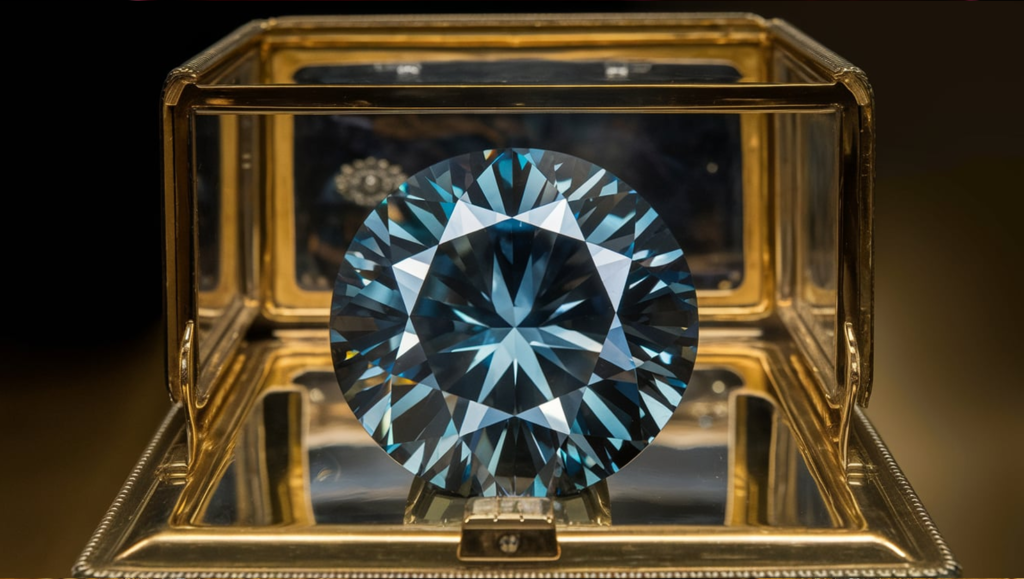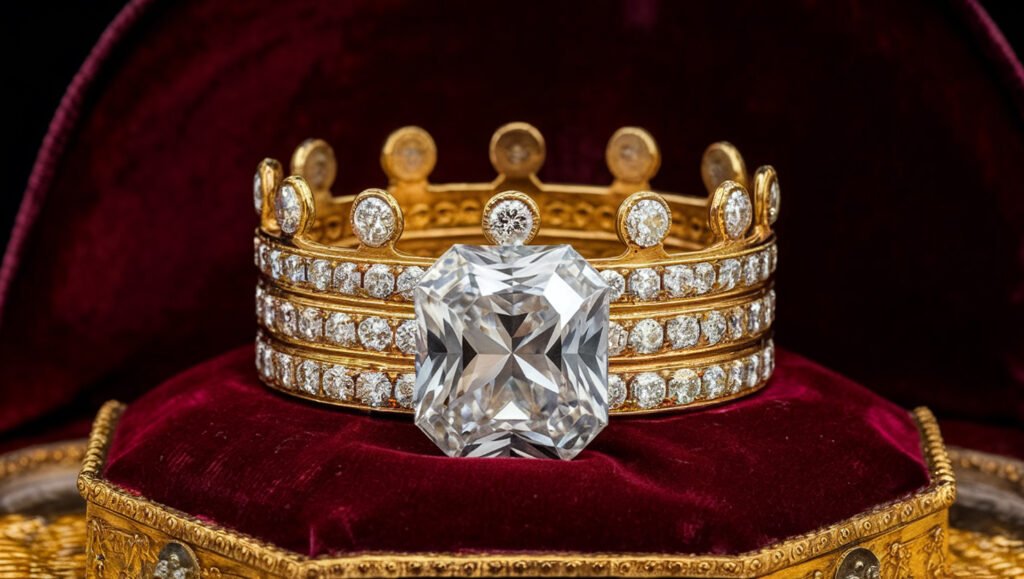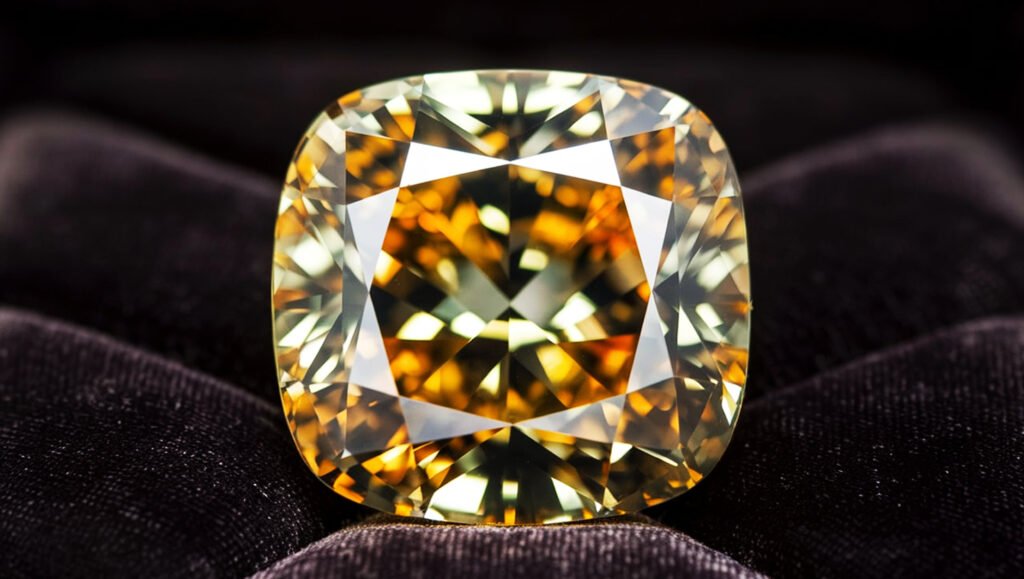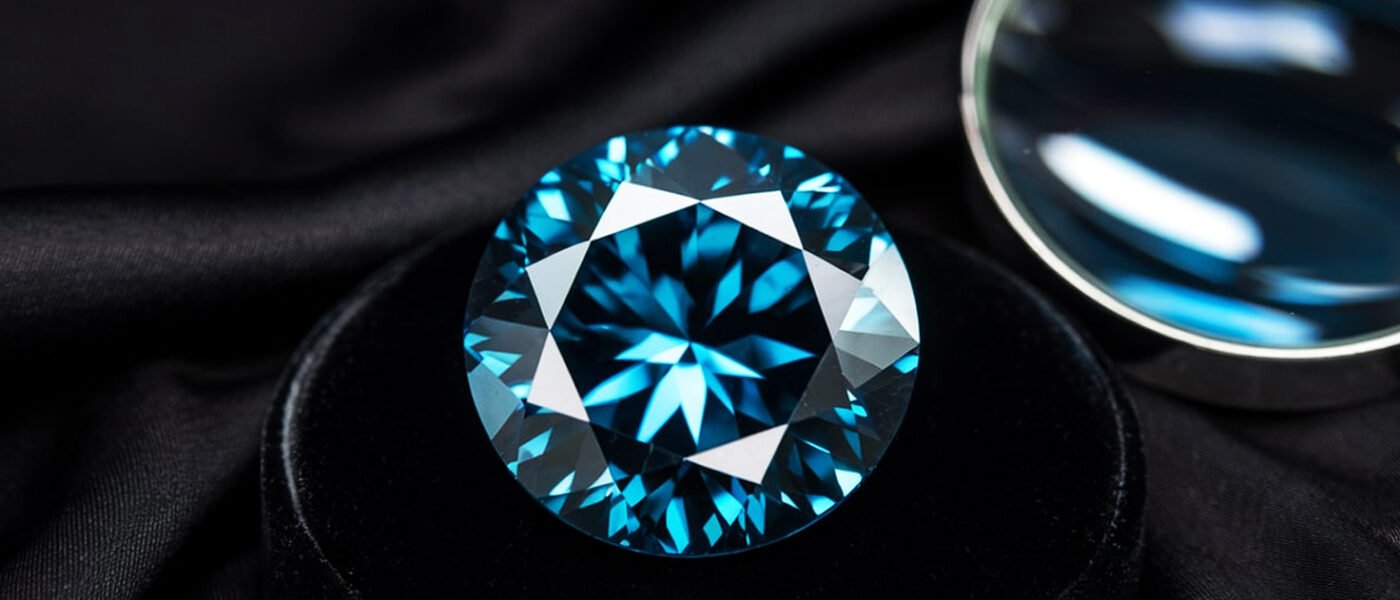Mystery of Kohinoor | The Famous Diamond | Fact Glow

Mystery of Kohinoor | The Famous Diamond
Hello everyone. I hope you guys are well in this very informative article we discuss the Mystery of Kohinoor. so get into the topic
In 1854, when India was under British Colonial rule, the then Governor General Lord Dalhousie sent a 15-year-old child from Punjab to England. Lord Dalhousie believed that the mother of this child was a threat and had a bad character. and so it was important to take him away from the mother.
In England, this child converted to Christianity and became fast friends with Queen Victoria’s son Edward VII. The British Crown was responsible for this child, and he received an annual stipend of £50,000. If you adjust it for inflation today, it would amount to ₹650 million per year.
Friends, this child wasn’t an ordinary boy. He was Prince Duleep Singh, also known as Maharaja Duleep Singh, the last ruler of the Sikh Empire in India. Interestingly, four years before he was sent to England, in 1849, when the British defeated the Sikhs in the battle, Lord Dalhousie had ordered the 11-year-old Duleep to surrender a diamond to Queen Victoria.
This was the Kohinoor Diamond. That year, it travelled 6,700 km on a ship, to go to London. A legend attached to the Kohinoor diamond states that, “He who owns this diamond, will own the world; But will also know all its misfortunes.” It is a superstition known as the Curse of Koh-i-noor. Because friends, every person who owned Koh-i-noor, had lived lives full of bloodshed, violence, and betrayals.
This is the most infamous diamond in history. In today’s article, come, let’s us delve into the interesting story of Koh-i-Noor. “The Kohinoor Diamond is kept in the Tower of London’s Jewel House, for many years, but there have been regular demands to get it back from Britain.” “The Kohinoor diamond, during the rule of the British, was taken from India to Britain.
And became the jewel of the Queen’s crown.” “I saw the Kohinoor. The first eyewitness description of it. I saw the Kohinoor, it was attached to the head of the peacock on top of the Peacock Throne.” Friends, there are many prevalent theories regarding this. About the origin of Kohinoor. Where was it discovered? A civil servant working for the East India Company, Theo Metcalfe, wrote in his report that according to tradition, this diamond was extracted during the lifetime of Krishna.

Read more>> NASA Search for Aliens
But according to historians, the most accepted view is that this diamond was found in the Kollur Mines, in the Golconda region. Don’t confuse it with the Kolar Mining area, which was popularised in the KGF film. The Golconda diamonds are found on the banks of the Krishna River. On coastal Andhra Pradesh.
During the 18th century, this area was the only area in the world where diamonds could be found. Until 1725, when diamond mines were discovered in Brazil. It isn’t clear who was the one to discover the Kohinoor diamond and how, but normally, the gemstones are found on the river beds of dried-up rivers.
Historically, we don’t even know when was it discovered exactly. The best estimates of the historians claim that it was discovered between the years 1100-1300. It is believed that the first mention of Kohinoor was in a Hindu text in 1306. The problem is that no one knows the name of the text. Nor does anyone know who wrote it.
The first written record of the mention of Kohinoor was in 1526. When the first Mughal emperor Zahirudin Babur came to India in 1526. In Baburnama, he had written that it is a diamond which is worth half the daily expense of the whole world. It is believed that he had won the Kohinoor diamond as a prize for winning a particular battle.
The second mention of Kohinoor was by Shah Jahan in 1628. When he commissioned his famous Peacock Throne. It took 7 years for this throne to be finished. And it was four times as expensive as the Taj Mahal. A large amount of precious stones and gems were used to make this throne. but of tnumbert precious gems one was the Kohinoor diamond, and the other was the Red Timur Ruby.
An interesting fact, the Kohinoor wasn’t the most precious gen owned by the Mughals. The Mughals prefered the Timur Ruby so that was the most valuable stone for them. Because the Mughals preferred the brightly coloured stones On the other hand, the Hindu and Sikh kings, preferred diamonds. You can consider this as a personal preference.
But despite that. the Kohinoor was given a prestigious place on the Peacock Throne, by making it the eye of the Peacock. The diamond hadn’t been named Kohinoor yet. Around 100 years later, under the Mughals, Delhi had become one of the wealthiest cities in the world, more than 2 million people lived here, greater than the combined population of London and Paris.
But by this point in time, the Mughal Empire had weakened. The wealth of Delhi attracted Persia’s, Nadir Shah. In 1739, Nadir Shah invaded Delhi, and defeated Mohammed Shah. Mohammed Shah was the 15th Mughal emperor, the great-grandson of Aurangzeb. Nadir Shah too many treasures from Delhi with him when he returned.
700 elephants, 4,000 camels, and 12,000 horses were needed to carry the treasures. Among these treasures, was the Kohinoor diamond as well. A common belief has it that Nadir Shah had received a tip from an official working in the Mughal Empire, that Mohammed Shah had hidden the Kohinoor diamond in his turban.

There used to be an old war custom of exchanging turbans, so Nadir Shah proposed to exchange turbans with Mohammed Shah, when the Kohinoor diamond fell to the ground. It shone so brightly under the light that Nadir Shah uttered Koh-i-Nur. It literally meant Mountain of Light. And thus this diamond was named.
But Nadir Shah’s financial official of the time, wrote a book Tarikh‐i ‘Alam‐ara‐yi Nadiri. The content of the book provided us with a written record. That the Kohinoor was attached to the head of the Peacock Throne. Nadir Shah took the Peacock Throne with him and wore the Timur Ruby and Kohinoor diamond on his armband.
The origin story of the name of this diamond may not be true. The part that it was hidden in a turban, but it is true that Nadir Shah had named this diamond Kohinoor. Because this book has the reference to the diamond as Kohinoor. For the next 70 years, Kohinoor remained the part of present day Afghanistan.
This is where the Curse of Kohinoor comes to play. I talked about it in the beginning of this article. The owner of the diamond would own the world, but all the misfortunes will fall on him. This saying is taken from the Hindu text written in 1306, as I told you before, it is believed to be the very first mention of the Kohinoor diamond.
It is a superstition but as you will see that it is true to some extent. Misfortune fell on Nadir Shah on 1747. When Nadir Shah was killed by his guard. His empire collapsed as a result. Ahmad Shah Durrani, also known as Ahmad Khan Abdali. Was a member of Nadir Shah’s army. He became the founder of the new Afghan empire.
And with it, the new owner of the Kohinoor diamond. William Dalrymple and Anita Anand’s book tells us that the grandson of Nadir Shah, Shahrukh Shah, had molten lead poured on his head similar to what was shown in Game of Thrones, to find out where Kohinoor was hidden. You can call it the curse of Kohinoor or anything else, but there were a lot of infighting in the Durrani empire as well.
Ahmad’s son Timur ran the empire adeptly. but later, Ahmad’s grandsons, fought amongst each other for the throne. Timur’s son, the third ruler of the empire, Zaman Shah Durrani, was blinded with hot needles. His brother, the fifth ruler was Shuja Shah Durrani. His wife had said that if a strong man threw four pebbles in four directions, North, South, East, and West, and then threw a fifth pebble into the air, and the space enclosed by the five pebbles, were filled with gold, the value of all the gold there would still not match Kohinoor’s value.
Shuja Shah Durrani wore the Kohinoor on his bracelet. In 1809, he was dethroned, and he fled with the Kohinoor diamond to Lahore. There he took refuge from Maharaja Ranjith Singh. Ranjith Singh was the founder of the Sikh Empire, and in exchange for providing refuge to Durrani, he asked for the Kohinoor diamond.
And so the Kohinoor diamond went to the Sikh empire in 1813. Even for Ranjith Singh, Kohinoor held a lot of symbolic importance. The land usurped by the Durrani dynasty, was won back by him. He was known as the Lion of Lahore, or the Sher-e-Punjab. And he wore the Kohinoor on his bicep. In an armlet. Some years later, East India Company’s hold over India was getting stronger, when the British came to know about the death of Ranjith Singh in 1839, they also came to know of his plan to give this diamond to some Hindu priests.
Read more>> The History Of Energy Drinks
The British newspapers of the time, were infuriated with this. One of the newspapers published “The richest, the most costly gem in the known world, has been committed to the trust of a profane, idolatrous, and mercenary priesthood.” The British government ordered the East India Company to keep an eye on the Kohinoor diamond.
To continue tracking where it goes and look for the opportunity to get it for the British treasury. The British had to wait for nearly a decade. After Ranjith Singh’s death in 1839, the Punjabi throne was passed on to four rulers over the next four years. By 1843, there were only two people standing. One, Ranjith Singh’s wife Rani Jindan, and the other, a five-year-old child.
Prince Duleep Singh. Finally, when the second Anglo-Sikh war ended in 1849, the East India Company ended the rule of the Punjab empire. By then Duleep Singh was about 10 years old. EIC made him sign a Treaty of Lahore. As per this treaty, the Kohinoor diamond was supposed to be handed over to the East India Company.
Punjab was the last major state that hadn’t been conquered by the British. After winning this war, the East India Company didn’t want to leave any scope to allow the Sikh Empire to sprout once again. And so they jailed Jindan, and the only other remaining family member, was shipped to London, and converted to Christianity.
I told you this at the beginning of the article. When Duleep Singh was merely 15-years-old, he was sent to London in 1854. In July 1854, when Duleep Singh’s portrait was being painted in the Buckingham Palace, Queen Victoria gave him an opportunity to see the Kohinoor once again. He held it in his hand, and it is said that the words he spoke were During the last years of his life, Duleep Singh rebelled against England, he tried to return to India, but he was prevented by the British.
He tried to get the help of the Germans. But unfortunately, he remained unsuccessful. It is said that he had an unfortunate death. at 55 years old, in Paris. His living conditions were quite bad by then, he was living in poverty. On the other hand, Kohinoor became a special possession of Queen Victoria, interestingly, the ‘curse of Kohinoor’ warning any man who owned it, also said that Only a God or a woman can wear it with impunity.
Without any adverse consequences. In 1851, in the Hyde Park of London, an exhibition was held, wherein the British people had the opportunity to see the Kohinoor. But the public reaction was quite unexpected. People were surprised to see empires fighting over a small piece of rock. People couldn’t believe that it was the same Kohinoor diamond for which people had killed one another.
To them, it simply looked like a glass piece. Not unlike any normal piece of glass. It was reported by the Times newspaper in June 1851. After the disappointing reaction of the public, Queen Victoria’s husband, Prince Albert, commissioned the recutting and polishing of Kohinoor in 1852. So that light could be reflected better, and it could shine more.
He wanted people to be mesmerised by looking at it. But due to this process, Kohinoor lost 40% of its weight. It used to be 186 carats, and after the recutting and polishing, it was left with 105.6 carats. presently, the dimensions of Kohinoor diamond are Kohinoor is now about as big as a chicken’s egg.

Moving on with our story, when the British got their hands on Kohinoor, they too were scared of the Curse of Kohinoor. So going forward, the British Royal Family decided that they wouldn’t give the Kohinoor to a man. When the monarch would be male, the Queen Consort would be the one to wear the Kohinoor.
(13:16) And that why’s over the next years, when the British throne was passed on, Kohinoor always went to the Queen. Eventually, it became a part of the Crown Jewels. It was first put in Queen Alexandra’s crown, then in Queen Mary’s, and finally in 1937, it was embedded in the crown worn by the mother of the present Queen of England.
The Queen Mother’s funeral was held in 2002, when the crown was last seen in public. Currently, this crown and the Kohinoor, can be found in the Tower of London’s Waterloo barracks, in the Jewel House inside it. They are kept there. Over the last 800 years of Kohinoor’s history, the British monarchy has been the owner of Kohinoor for the longest.
Many Indians feel quite emotional towards the Kohinoor. Shashi Tharoor’s 2015 Oxford Union speech had become very famous. “India’s share of the world economy when Britain arrived on its shores, was 23%. By the time the British left, it was down to below 4%. India was already Britain’s biggest cash cow, the world’s biggest purchaser of British goods, a and exports…”
His arguments were praised by Prime Minister Modi as well. He laid out the economic and prosperity potential lost by India due to British colonialism. And Kohinoor is now a symbol of this British colonialism. The question is whether the Kohinoor diamond was stolen by the British from India, or was it a gift? That was given to them in exchange of the deal.
1 year after Shashi Tharoor’s 2015 speech, in 2016, a petition was filed in the Supreme Court by an NGO. The petition stated that the government should get the Kohinoor back. That the Indian government should demand that the British government return the diamond. But Ranjith Kumar, the government’s representative in court, said that the diamond was a part of the Lahore Treaty, neither has it been stolen nor taken forcefully, and to try to get it back would be futile.
Later, the Archaeological Survey of India said on behalf of the government that they would try their best to get back the Kohinoor using friendly ways. It was said that the arguments by Mr Kumar did not represent the views of the government. But legally speaking, there are no legal grounds for Kohinoor’s return to India.
The only legal route present here, is the 1970 UNESCO Convention. The Convention on the Means of Prohibiting and Preventing the Illicit Import, Export and Transfer of Ownership of Cultural Property. The cultural heritage of the country that was taken to another illegally, through unfair means, But there are two problems with this convention.
First, it cannot be applied retrospectively. The cultural heritage that was taken before 1970, does not have to be mandatorily returned. And the other thing is that Cultural Heritage has been defined in Article 1 of the Convention, as a property which, on religious or secular grounds, is specifically designated by each State as being of importance for archaeology, prehistory, history, literature, art or science The second problem is that even if the cultural heritage is returned, which country should get it?
Read more>> 2000 Years of Olympics
The situation is quite complicated, because of the present borders drawn between the countries, are quite recent. The kingdoms which existed before this, during the monarchies, had dynamic borders, which were redrawn very often. Today, the sovereign territories of India, Afghanistan, and Pakistan, exist only after their Independence.
Before this, there used to be kingdoms. Technically speaking, Kohinoor diamond has not been taken from the sovereign territories of India, Afghanistan, or Pakistan. Because those territories were created only after a specific date. But the Kohinoor was taken before that from kingdoms. Another question here is whom should Kohinoor be returned to? In Afghanistan, Taliban’s spokesperson said in 2000, that they want Kohinoor back in their country.
In 2016, a petition was filed in Pakistan’s Lahore High Court, because the British had stolen the Kohinoor from present-day Pakistan. Because the capital of the Sikh empire was Lahore. Anthropologist Richard Kurin says that logically, Kohinoor can be returned to several countries. Afghanistan, Pakistan, India, and even Iran can rightfully claim the ownership of this diamond.
Because back then, stealing and plundering used to be quite common. But back then, none of these countries existed. Even though, geographically, their regions existed. It should be differentiated from other events for example, the cultural heritage stolen by the Nazis, where it can be clearly seen the country the theft took place in.
Because these countries existed already. Emotionally as well, Richard Kurin says we should let go of Kohinoor forever. So that its dark history is not repeated, and it is allowed to rest at its final resting place. What is your opinion? Write in the comment section below. Should the government try to get Kohinoor back? Or should we let it be there? If you liked the Mystery of Kohinoor than comment now
Thank you very much!

